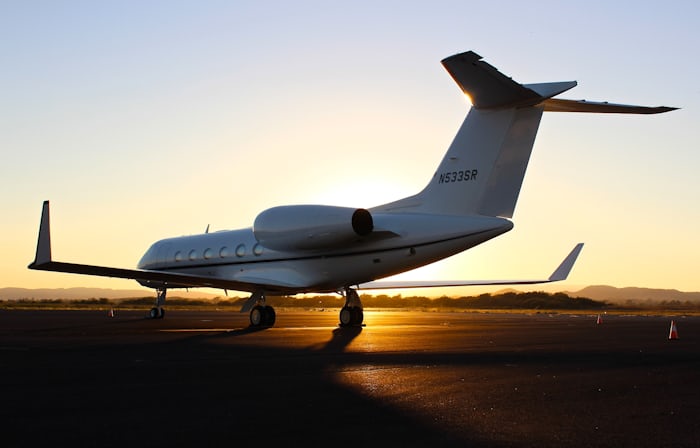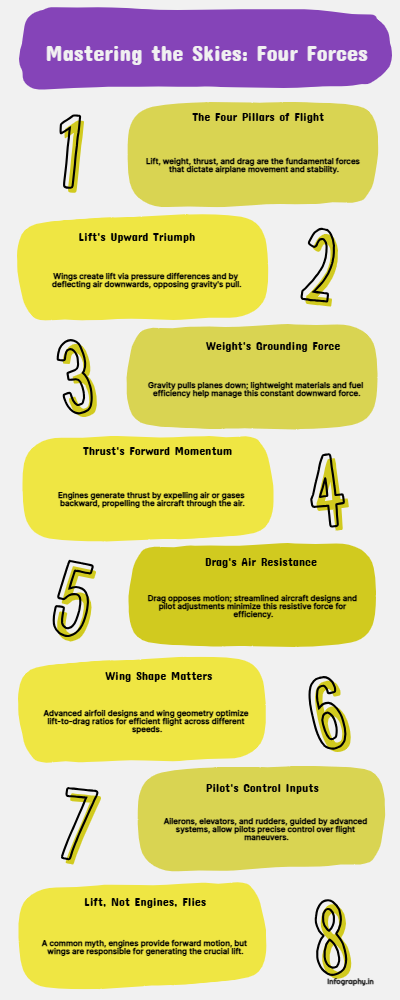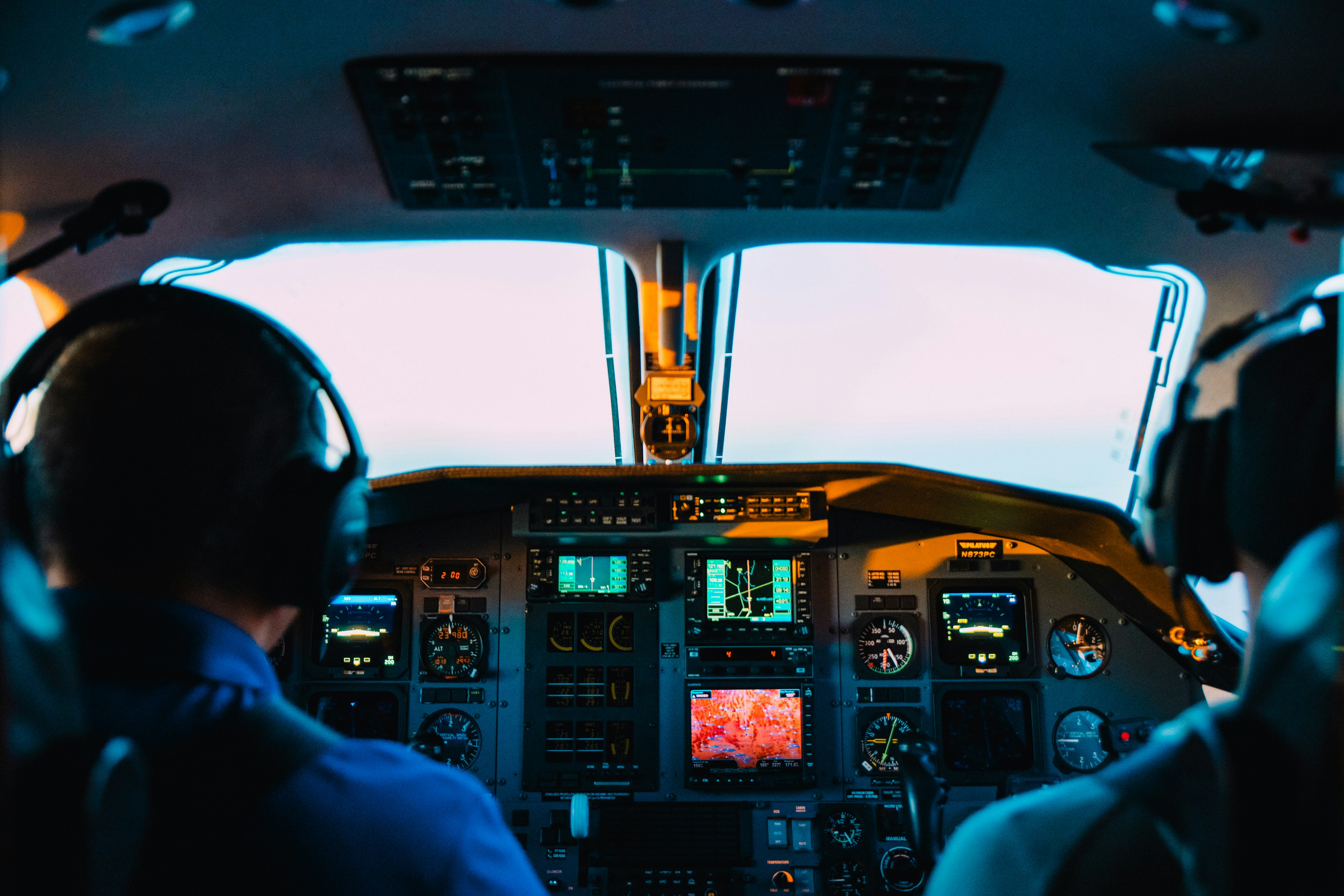Have you ever gazed up at a massive airplane cruising effortlessly through the clouds and wondered, "How does that thing stay up there?" It's a question that has puzzled humans for centuries, from ancient myths of flying gods to modern aviation marvels. Airplanes, weighing tens of thousands of pounds, seem to defy the laws of physics by staying aloft. But the truth is rooted in solid science principles discovered by pioneers like the Wright brothers and refined over decades of engineering.
We'll explore the four fundamental forces at play, the role of wing design, and how pilots control these behemoths in the sky. By the end, you'll have a clear understanding of why airplanes don't just plummet to the ground. Whether you're a aspiring pilot, a science enthusiast, or just someone killing time on a layover, this guide will demystify the magic of aviation. Let's take off!
The Four Forces of Flight: The Core Principles
At the heart of why airplanes stay in the air are four key forces: lift, weight (gravity), thrust, and drag. These were first conceptualized by Sir Isaac Newton and later applied to aviation. For an airplane to fly steadily, lift must equal weight, and thrust must equal drag. Any imbalance, and the plane climbs, descends, accelerates, or slows down.
Lift: The Upward Force That Keeps Planes Aloft
Lift is the star of the show—the force that counters gravity and keeps the airplane in the air. It's generated primarily by the wings, which are shaped like airfoils. An airfoil has a curved top surface and a flatter bottom, creating what's known as camber.
As the airplane moves forward, air flows over and under the wings. According to Bernoulli's principle, discovered by Swiss mathematician Daniel Bernoulli in the 18th century, faster moving air exerts less pressure. The curved top forces air to travel faster over it than under the flat bottom, creating lower pressure above the wing and higher pressure below. This pressure difference pushes the wing upward, producing lift.
But Bernoulli isn't the whole story. Newton's third law action and reaction also plays a role. Wings deflect air downward, and in response, the air pushes the wing upward. This angle of attack, the tilt of the wing relative to oncoming air, is crucial. Too steep, and the plane stalls; too shallow, and lift is insufficient.
Modern wings incorporate flaps, slats, and ailerons to adjust lift dynamically. For example, during takeoff, flaps extend to increase camber and lift at lower speeds.
Weight: The Downward Pull of Gravity
Weight is simply the force of gravity pulling the airplane toward Earth. It's determined by the plane's mass, including fuel, passengers, and cargo. Engineers design aircraft to minimize weight using lightweight materials like carbon composites in models such as the Boeing 787 Dreamliner. As fuel burns off during flight, weight decreases, allowing for more efficient cruising.
Thrust: The Forward Push
Thrust propels the airplane forward, overcoming drag. It's produced by engines jet engines in commercial airliners suck in air, compress it, mix it with fuel, ignite it, and expel hot gases backward. This expulsion creates forward thrust via Newton's third law.
Propeller planes use spinning blades to push air backward. Thrust must be greater than drag for acceleration, equal for steady speed.
Drag: The Resistive Force
Drag opposes motion through the air, caused by friction and pressure differences. There are two types: parasitic drag (from skin friction and form) and induced drag (from lift generation). Streamlined designs, like the pointed nose and swept wings of supersonic jets, reduce drag. Pilots manage drag with speed and altitude adjustments.
These forces interact constantly. During cruise, they're balanced; during maneuvers, pilots adjust them via controls.
The Role of Wing Design and Aerodynamics
Wings aren't just flat slabs; their design is a masterpiece of engineering. The aspect ratio span divided by chord affects efficiency. Long, narrow wings (high aspect ratio) like those on gliders produce less induced drag, ideal for soaring. Short, wide wings suit fighters for maneuverability.
Supercritical wings, developed by NASA in the 1970s, flatten the top to delay shock waves at high speeds, allowing faster flight with less drag. The Airbus A350 uses such wings for fuel efficiency.
Aerodynamics also involves the fuselage, tail, and even landing gear. Vortex generators small fins on wings disrupt airflow to prevent stalls. Laminar flow designs minimize turbulence for smoother flight.
Altitude matters too. At higher altitudes, thinner air reduces drag but also lift, so planes fly where the balance is optimal, around 30,000-40,000 feet.
How Engines and Controls Contribute to Staying Airborne
Engines don't just provide thrust; they power systems that maintain flight. Turbofan engines, common in airliners, have a large fan for efficient thrust at subsonic speeds.
Pilots use controls to manipulate forces:
- Ailerons: On wings, roll the plane left/right.
- Elevators: On tail, pitch nose up/down.
- Rudder: On vertical tail, yaw left/right.
Fly-by-wire systems in modern planes like the Boeing 777 use computers to optimize these, preventing dangerous maneuvers. Autopilot maintains altitude by adjusting these controls based on sensors measuring speed, attitude, and more.
Busting Common Myths About Airplane Flight
Myth 1: Airplanes fly because engines push them up. No, engines provide forward motion; wings create lift.
Myth 2: Wings must be curved on top. Actually, flat wings can generate lift via angle of attack, as seen in paper airplanes.
Myth3: Planes can't fly upside down. Inverted flight is possible with sufficient angle of attack, though stressful on the airframe.
Factors Affecting Flight Stability
Weather impacts flight: Turbulence from wind shear disrupts lift; icing adds weight and alters airfoil shape. Pilots train for stalls, where airflow separates from the wing, dropping lift. Recovery involves lowering the nose to regain speed.
Fuel management ensures center of gravity stays balanced too forward or aft affects stability.
High-speed flight near Mach 1 involves compressibility, where air behaves differently, leading to designs like delta wings on the Concorde.
Historical Evolution: From Wright Brothers to Modern Jets
Flight's story begins with the Wright brothers' 1903 Flyer, a biplane with warped wings for control. They understood lift through wind tunnel tests.
World War I spurred advancements like metal monoplanes. The jet age dawned post-WWII with the de Havilland Comet. Today, electric and hybrid planes like those from Joby Aviation promise sustainable flight, using distributed propulsion for enhanced lift.
Airplanes stay in the air through a delicate balance of lift, thrust, weight, and drag, harnessed by ingenious designs and physics principles. From Bernoulli's pressure differences to Newton's reactive forces, it's science, not magic, that enables us to traverse continents in hours.




